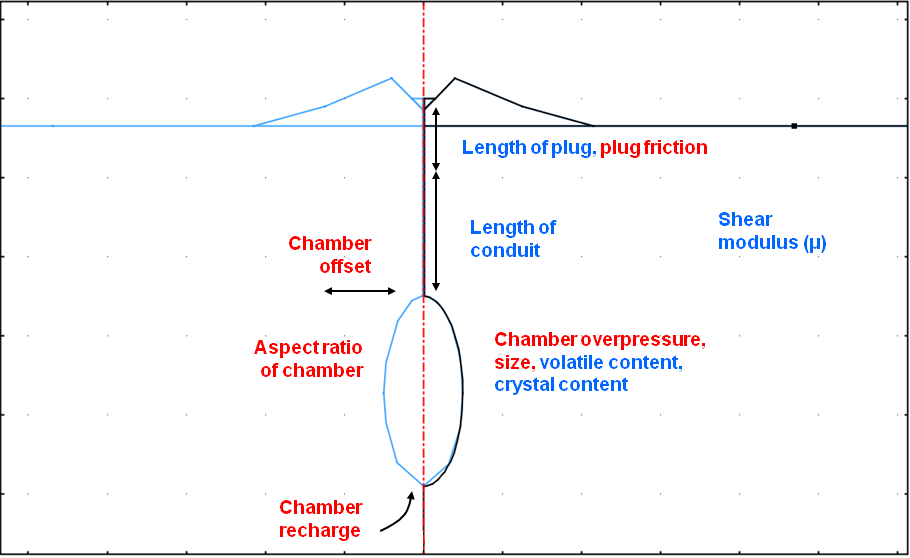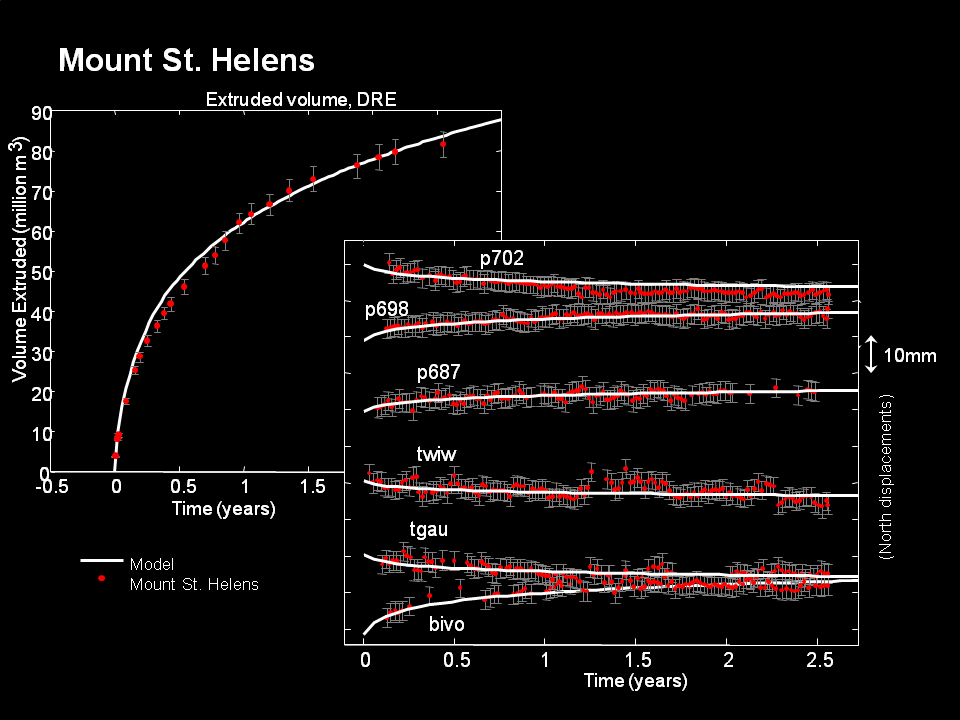|
|
|
Kyle Anderson’s research focuses on the geophysics of effusive silicic
volcanic eruptions, with a special emphasis on the 2004-08 eruption of
Mount St. Helens, Washington. Mount St. Helens began to erupt in 2004
with very little precursory seismicity or ground deformation, which
gave public officials little time to prepare for a potential eruption.
We hope that by better understanding these events we can improve our
ability to forecast eruptions at other silicic volcanoes around the
world.
Present work focuses on the development of a unified model of the
evolution of an effusive silicic eruption through time, involving the
rise of magma from a deep chamber through a conduit to the surface and
growth of a lava dome. As the magma rises to the surface its pressure
drops and gas bubbles are exsolved from the melt. This, along with the
formation of crystals, results in a dramatic increase in the viscosity
of the magma, and the formation of a stiff plug of rock which is
extruded from the volcano like very hot toothpaste from a tube.
Modeling this behavior, and relating it to deformation of the
surrounding host rock, requires the solution of a complex system of
coupled equations. Preliminary results indicate a magma chamber volume
of approximately 5-10 km3, of which ~0.1 km3
erupted in the interval 2004-2008. There is also some evidence for
resupply of new magma into the chamber during the eruption, although
this is not well constrained.
One of the advantages of such a model is that we can constrain it using
many different kinds of geophysical data; for example, since this model
predicts rates of dome growth as well as ground deformation
simultaneously, it can be constrained by both types of data, and this
allows us to make better inferences about subsurface magma properties.
Also, since the model couples realistic magma physics and geometries to
surface deformation, we are able to move beyond some of the simple
deformation source models currently in use. This is becoming
increasingly important as advances in our ability to monitor ground
deformation at erupting volcanoes reveal the limitations of our
existing models.

Figure 1: Basic geometry of the model. An ellipsoidal
magma chamber is connected to the surface with a thin, vertical
conduit. The surface can include topography of arbitrary complexity;
here, we show a rough approximation of the shape of Mount St. Helens.
Parameters we typically estimate (using an inverse procedure) are shown
in red, while those we estimate from other sources (usually published
literature) are shown in blue.

Figure 2: Fit of the model to data from Mount St. Helens. Left:
dome-growth data. Right: GPS data from six stations installed after the
onset of the eruption. |




